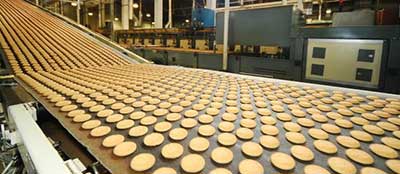Relevance: GS-3: Agricultural produce and issues and related constraints
Key phrases: Production-Linked Incentive Scheme (PLIS), Mega Food Parks, Good Governance Index, Netscribes (global data and insights firm), Trade Receivables Discounting System (TReDS)
Why in News?
Global Context
- Growing populations and unrestricted use of natural resources have pushed nations to work for an efficient food value chain.
- The challenge to feed the 10 billion population by mid-century is therefore being deliberated on several fronts.It demands efficient ways of production that are both economically viable and ecologically sustainable.
- Fortunately, global technologies are emerging that revamp the traditional approach of farm to fork and with a lower environmental footprint.
Indian Context
- India is the world's second largest producer of fruits & vegetables after China but hardly 2% of the produce is processed.
- India's livestock population is the largest in the world with 50% of the world's buffaloes and 20% of cattle, but only about 1% of total meat production is converted to value added products.
- India has formulated many policies like Production-Linked Incentive Scheme (PLIS) which aims to incentivise incremental sales, Mega Food Parks.
- Food connects us all and is tied to our community, traditions, our past and our future. It plays an important role in India’s unity in diversity.
Unlock food processing potential: Investment, EoDB, Financing, Export
- Production-Linked Incentive Scheme (PLIS)
- A sum of ₹10,900 crore has been earmarked for the scheme and to date, 60 applicants have already been selected under Category 1 which incentivises firms for incremental sales and branding/marketing initiatives taken abroad.
- Beneficiaries have been obliged to commit a minimum investment while applying for the scheme.
- The sector is likely to witness at least ₹6,500 crore worth of investment over the next two years.
- Significant investment in public infrastructure
- A study in the United States concluded that a 1% increase in public infrastructure increased the food manufacturing output by 0.06% in the longer run.
- This correlation holds good for India too as a higher investment is being concentrated in States such as Andhra Pradesh, Gujarat, Maharashtra, Tamil Nadu and Uttar Pradesh.
- These States as reported by the Good Governance Index 2020-21, ranked among the highest in the ‘Public Infrastructure and Utilities’ parameter with ‘Connectivity to Rural Habitations’ showing the highest improvement.
- These states are also the crusader of FPI growth and attracting FDIs from multiple avenues.
- Dedicated Efforts for Export Promotion
- The exports market, it is now established that sales promotion is positively related to increased sales volume, but inversely related to profitability.
- To bridge this gap, of the 13 key sectors announced under the PLIS, the ‘Food Processing PLIS’ earmarks a dedicated Category 3 for supporting branding and marketing activities in foreign markets.
- This ensures that India’s share of value-added products in the exports basket is improved, and it may leverage on its unique geographical proximity to the untapped markets of Europe, the Middle East/West Asia, Africa, Oceania and Japan.
- Covid: A blessing in Disguise
- As a result of the novel coronavirus pandemic, the past two years have been witnessing a significant number of people working from home.
- This has accelerated the demand for products from the ready-to-eat market which saw a rise of approximately 170% in sales volume between March-June 2020, as stated by Netscribes (global data and insights firm).
- The pandemic has bolstered consumer awareness of functional foods, which is expected to provide a launchpad for health-orientated start-ups and micro-food processing units.
- However, the access of micro, small, and medium enterprises (MSMEs) to finance is a perennial problem in the country, predominating due to a lack of proper credit history mechanism for MSMEs.
- Smart financing alternatives are emerging
- Peer-to-peer (P2P) lending holds potential for micro-food processors as can be observed by the United Kingdom Government-owned British Business Bank (akin to India’s MUDRA Bank).
- Access to working capital has in theory been addressed by the Trade Receivables Discounting System (TReDS), a platform for facilitating the financing/discounting of trade receivables of MSMEs through multiple financiers.
- However, the platform requires considerable scaling-up and simultaneous enforcement of stringent measures for corporates to comply with.
- Integrating the TReDS platform with the Goods and Service Tax Network’s e-invoicing portal will make TReDS more attractive and give relief to financiers.
Way Forward: Efficiency, Alternatives, Supply chain
- Need for an Efficient Global Supply Chain
- Growing populations
- Changing food habits
- Unrestricted use of natural resources
- Nations must come together and lay out a road map for a common efficient food value chain.
- New alternatives shall be explored: These have immense potential
in replacing the staples of rice and wheat
- Nutri-cereals
- Plant-based proteins
- Fermented foods
- health bars
- Fresh fortified foods for pets.
- No wonder, if in the next few years, the progress of nations will be benchmarked to their ability to sustainably feed their populations.
- Food processing sector has the potential to be a panacea for various issues like famines and hunger. However, the bottleneck issues would need to be addressed with global efforts.
Source: The Hindu
Mains Question:
Q. What explains the Indian paradox of highest cereal production, second highest Fruits and vegetables production but still poorest contribution in Global Food supply chain?







